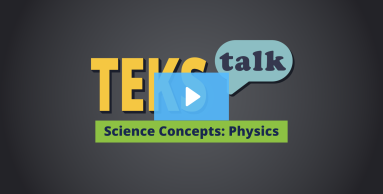
Knowledge and Skills Statement
The further explanation is designed to be a resource for educators that helps them better understand the topic their students are learning. Further explanations may be written at a more complex level than would be expected for students at the grade level.
The statement "an object in motion will remain in motion unless acted upon by an outside force" leads to misconceptions. This statement does not address the speed and direction (velocity) of the object. In considering examples of Newton's first law, the object's velocity must be constant. The statement also does not provide a clear definition of an outside force. To determine whether or not a force is outside of the system, the boundaries of the system must be defined.
Research
Syuhendri, Syuhendri. "Teaching for Conceptual Change on Newton’s First Law." Journal of Physics: Conference Series 2165, no. 1 (2022):012036. https://doi.org/10.1088/1742-6596/2165/1/012036
Summary: There was a significant difference of increase in students’ conceptual understanding between those who were taught Newton's First Law using the conceptual change approach and conventional one. Therefore, the teaching for conceptual change can be used to help students to reduce their misconceptions.
Research
Peskir, Goran. "On Newton’s First Law of Motion." Axioms 11, no. 7 (2022): 319-323. https://doi.org/10.3390/axioms11070319
Summary: We present arguments in support of the view that Newton’s first law of motion extends itself to stochastic motions as follows: Every entity perseveres in its state of independent and stationary increments except insofar as it is compelled to change its state by forces impressed. Some of the far-reaching consequences of the extended law are briefly touched upon.
